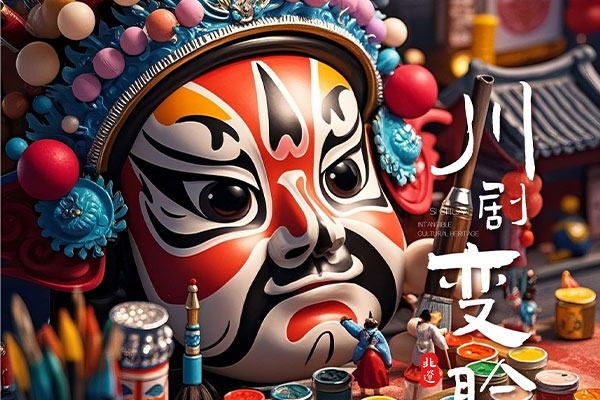Chinese Intangible Cultural Heritage - Sichuan Opera (Chuanju)
Introduction
Sichuan Opera, also known as "Sichuanese Theater," is one of the regional opera forms of Sichuan Province, China. Renowned for its unique performance style, rich repertoire, and the spectacular face-changing technique, Sichuan Opera is not only a theatrical art form but also an important carrier of Bashu culture, showcasing the history, folklore, and artistic characteristics of the Sichuan region.
History
The history of Sichuan Opera can be traced back to the Tang Dynasty, but it truly took shape during the late Ming and early Qing Dynasties. It evolved from local Sichuanese theater, absorbing elements from Kunqu Opera, Qinqiang Opera, Han Opera, and other theatrical arts. By the mid-Qing Dynasty, Sichuan Opera had matured and gained popularity in Sichuan and surrounding regions. In the early 20th century, it reached its peak, giving rise to many renowned performers and distinct schools of artistry.
Regional Characteristics
Sichuan Opera is primarily popular in Sichuan Province and Chongqing, serving as an integral part of Bashu culture. Chengdu and Chongqing are the two major centers of Sichuan Opera, home to many famous theaters and performance troupes. The performance style of Sichuan Opera is unique, blending bold and vigorous elements with delicate and graceful ones, fully reflecting the cultural diversity of the Sichuan region.
Cultural Significance
Sichuan Opera is an important component of Chinese traditional culture. Its repertoire often draws from historical stories, myths, legends, and folk tales, reflecting the lives, beliefs, and values of the people of Sichuan. The performance art of Sichuan Opera integrates elements of literature, music, dance, visual arts, and martial arts, showcasing immense artistic and cultural value.
Performing Arts
The performing arts of Sichuan Opera are highly diverse, encompassing four main aspects: singing, recitation, acting, and acrobatics. The singing style, primarily characterized by high-pitched tunes, carries a strong local flavor. Recitation emphasizes phonetics and rhythm, creating a unique musical aesthetic. Acting refers to the physical movements and facial expressions of the performers, focusing on subtlety and vividness. Acrobatics demonstrate exceptional skills. Additionally, the face-changing technique is a distinctive artistic feature of Sichuan Opera, where performers rapidly change masks to convey emotional shifts, leaving audiences in awe.
Preservation and Innovation
As a Chinese Intangible Cultural Heritage, Sichuan Opera has received widespread attention and protection from the state and society. The governments and cultural institutions of Sichuan Province and Chongqing actively promote the inheritance and development of Sichuan Opera, nurturing a new generation of performers. At the same time, Sichuan Opera continues to innovate, integrating modern artistic forms and demonstrating renewed vitality.
Conclusion
Sichuan Opera is a treasure of Chinese traditional culture, carrying a rich historical and cultural legacy. By preserving and passing down this ancient art form, we can not only appreciate the brilliance of Sichuan Opera performances but also gain a deeper understanding and appreciation of Chinese traditional culture.







